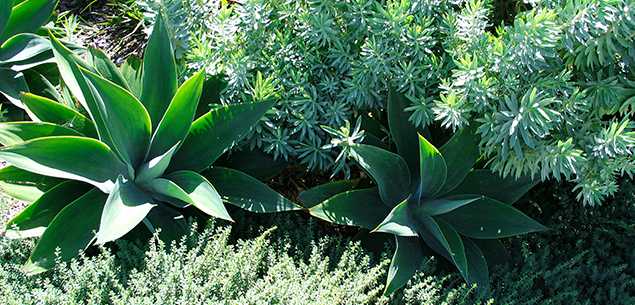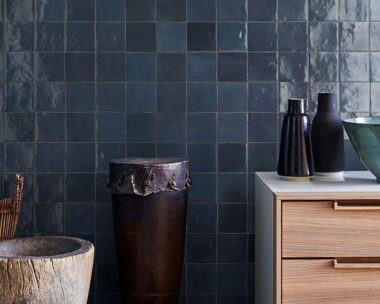Ever looked in the window of a clothes shop and seen a combination that really works, even though it possibly shouldn’t? An orange dress with a pink scarf, or a frilly blouse with jeans and Doc Martens?
You might have thought the pairing very odd a couple of decades ago, but times change and so do trends, styles and personal taste.
This applies as much to gardening as it does to fashion or interior design. When I first got hooked on gardening, I thought there were two shades of green – dark and light – and it didn’t much matter which one you chose.
Now I reckon there are more shades of green in nature than ever appeared on the Resene colour chart, and more textures than you’d find in a fabric shop. And just like clothes, some work together and some don’t.
It’s not that difficult to find and choose bold plants for the garden. Those with big, coarse leaves stand out at the garden centre and demand to be taken home.
Fine foliage, though, is recessive, so you need to train your eye to find such plants and use them well in your own garden.
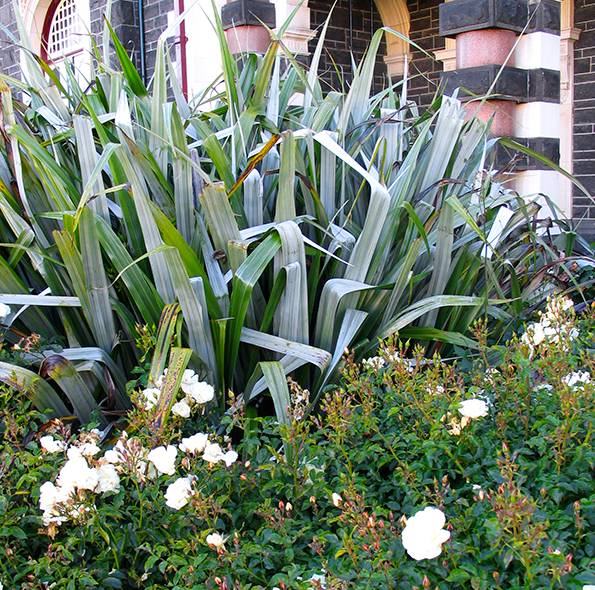
Astelia and rose: It took imagination to take the risk of marrying this big astelia with the delicacy of a creeping rose.
Soft, lacy or fine textured foliage is perfect for small gardens, because for some reason, it makes the space look bigger. On the other hand, coarse-textured foliage closes space in and makes the area seem more intimate. (I have yet to figure out whether this works with clothes, and if it does, which style will make me look thinner.) The thing is, though, you have to have both, or neither will stand out and you’ll end up with a garden that has no contrast.
My first lesson in combining foliage was at a garden centre, where a customer had plonked down a fatsia she’d changed her mind about in front of a big group of Carmichaelia. I could see instantly that it was a marriage made in heaven.
I bought half a dozen of the feathery Carmichaelia and teamed them up with fatsia. I’m still loving the combination. Similarly, I’ve married up an acanthus with a dark green Lomandra, and the same magic has occurred.
Those contrasts are pretty obvious – big, fat leaves with soft, spindly foliage – but you can be a little more subtle and still get a good look. Grasses, the helpful things, come in such a range of leaf sizes they can fall into either category, and simply by their needle-like nature will contrast with larger, rounded leaves.
To get started, pick something from the fine category and something from the coarse.
Fine foliage
Ferns (Dryopteris spp)
The fine cut foliage makes a beautiful background for the other perennials. Most ferns prefer moist, shady areas.
Fennel (Foeniculum vulgare) which we think of as a herb, can be successfully brought into mixed borders, foliage gardens or containers. Like most vegetables, it likes sun and well-drained soil. Fennel plants are typically green, but reddish-brown varieties exist that can add a dash of extra drama and tie in with other red-toned plants. Dill can also double as a decorative plant.
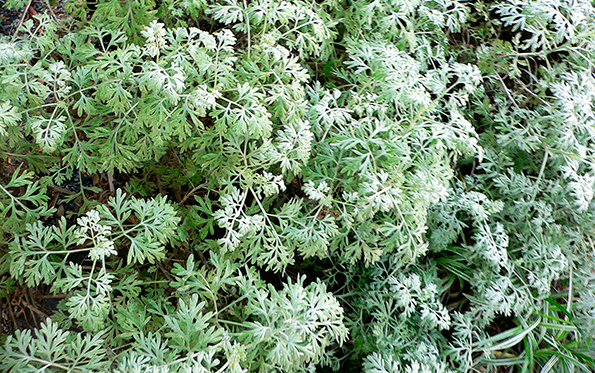
Artemisia: This soft, feathery, silver foliage looks fantastic with the strong, sharp spikes of astelia, silver coloured flaxes or bold grasses.
Wormwood (Artemisia spp) has silvery green foliage that is deeply cut and textured. It prefers full sun and well-drained soil and it’s very drought tolerant. When you’re blending this with other plants, choose your colours carefully, as the silver foliaged plants can be hard to match. If you’re unsure, pair it with dark green leaves rather than lime or yellow.
Convolvulus A prolific flowering, low-growing shrub with silver foliage, the convolvulus works as a suitable foliage plant because of its fine leaf and its soft, drooping habit. It needs a sunny, free-draining position and protection from severe frosts in the first season.
Bold foliage
Fatsia Japonica It’s an appropriate name for a plant with big, fat leaves. This valuable landscaping plant grows anywhere from full sun to full shade, which makes it easy to pair up with fine foliage. A native of Japan, it prefers rich, organic soil, it’s frost hardy and maintains its glossy, subtropical look year round. Depending on its location, it can be dark green or lime, so be aware of that when matching for colour.
Acanthus mollis (Bear’s Breeches) Another very large-leafed plant, this one is native to the Mediterranean North Africa area. It’s a herbaceous perennial with thick roots and glossy, strongly lobed, dark green leaves. The foliage is spectacular and forms an appealing clump, but the plant can be invasive.
Globe artichoke These big food plants are really eye-catching with their thistle-like flowers rising from huge, silvered leaves. They’re easy to grow and because they’re so big, many gardeners grow them in decorative beds as opposed to the vegetable garden. They pair up beautifully with silver grasses.
Phormium If you want really bold foliage, our own flax will provide you something in the size, shape and colour you want, from silver to bronze to purple to stripes. It would be easy to find something to put with it to make a statement.
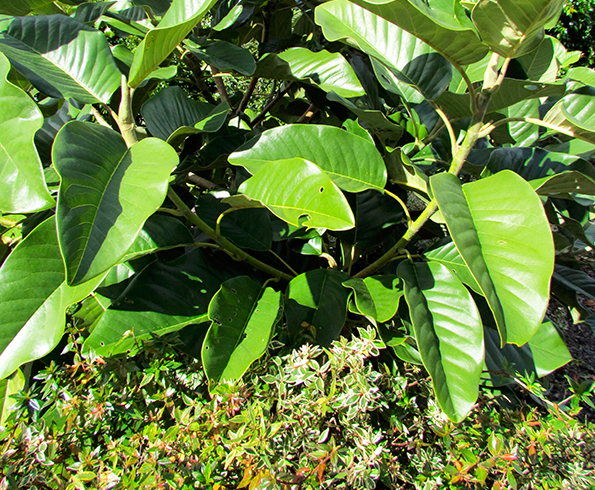
Choose two or three contrasting plants to add a dramatic accent to your garden.
Tips for matching foliage…
Choose just two or three contrasting plants to add a dramatic accent in one area of the garden.
Select plants with interesting leaf shapes and textures, such as cyclamen and hosta.
Use coloured and variegated foliage sparingly to avoid a confusing, garish look.
If you find you have too many similar plants in one area, clip one or two of them to create contrasts in form.
Use smooth, shiny foliage in shady areas to pick up and reflect the light.
Don’t be afraid to use showy flowering plants for their foliage. Magnolias often have foliage just as beautiful as their flowers.
Try out combinations by putting different types of foliage in a large vase of water and seeing if they work together.
As you do with clothes, rely on your idea of what suits you and choose accordingly. But don’t be afraid to take a fashion risk.
